In Memoriam: Ellen Siegel (July 5, 1934-February 12, 2014)
Ellen Siegel started her dance career at the top. At twenty-one, the stunning 5’9″ dancer was a soloist with the Martha Graham Company. She appears in the classic film about Graham, “A Dancer’s World.” One of her closest friends in the dance world, who remained so throughout her life, was Paul Taylor (and it may be Taylor partnering her in both of the photos here). She also modeled for Harper’s Bazaar and was in plays on Broadway.
Her career with the Graham Company ended prematurely when she began to suffer from an illness eventually diagnosed as myasthenia gravis, a degenerative muscle disease. For a number of years, she was bedridden and in and out of hospitals.
She fought her way back to being well enough to care for her daughter, Anny, and regained the ability to dance again. That turned out to be a great gift to dance in San Diego, where she had moved from her native New York. Ellen taught, presented, choreographed, and performed, perhaps most notably as one of the “Big Ladies,” along with two other tall, dramatic dancers, Pat Sandback and Marta Keeney-Jiacoletti.
She was known for her gift for being outrageous. In his reminiscence below, George Willis remembers that “At the drop of a hat she would model her latest lingerie for the guests.”
Ellen Siegel passed away on February 12. A number of people have generously shared their vivid memories of her, starting with Ellen’s daughter, Anny. And thank you, Anny, for these wonderful photographs.
Anny Marr (Ellen’s daughter)
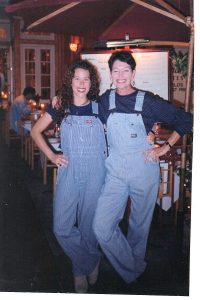 She instilled in me a wonderful confidence, an acceptance of people, a good education in the arts – painting, dance, music. She had me traveling at a young age. She was a very permissive mother, and as I kid I craved structure. Now I look back, and I’m incredibly thankful that she was my mom and was a wonderful, outrageous, funny, bright, kind, probably incredibly eccentric personality. She was the most loving and supportive and open parent. When it came to talking about sex or drugs, my friends would come over to my house and ask my mom pretty much everything. That’s a gift I get to carry with me my entire life.
She instilled in me a wonderful confidence, an acceptance of people, a good education in the arts – painting, dance, music. She had me traveling at a young age. She was a very permissive mother, and as I kid I craved structure. Now I look back, and I’m incredibly thankful that she was my mom and was a wonderful, outrageous, funny, bright, kind, probably incredibly eccentric personality. She was the most loving and supportive and open parent. When it came to talking about sex or drugs, my friends would come over to my house and ask my mom pretty much everything. That’s a gift I get to carry with me my entire life.
I have her old passport from when she traveled with Martha. They traveled to what was then termed the Far East – India, China, Indonesia. It looks like that was in 1955 and 56. She talked about how daunting it was. She told a story about being in a bar with her fellow dancers and making fun of Martha. Martha walked in and caught her. My mom was on top of a table. Martha had a talk with her after that.
When I was 12 or 13 my mom took me to see the Graham Company in L.A. Graham had to have been in her 80s and had arthritis. She grabbed my hand and even with the arthritis, she had incredible strength. “Your mother is a marvelous dancer,” she said with her rheumatic, arthritic hand curled around mine.
My mom wasn’t diagnosed with myasthenia gravis until she was in her thirties. She talked about getting a door slammed on her because someone thought she was drunk. She met my father and got married. She was told no way she could have baby. But she said nothing was going to stop her from having me. [Ellen and her husband divorced when Anny was three.]
She was pretty ill until I was 10 or 11. She told me when I was a baby she was so ill, she wanted to be my mother and have the strength to hold me again. She leaned against the hospital wall and saw a daddy long legs crawling up the wall and she said she embodied the spirit of the daddy long legs and she was determined to live again. I remember her having a tracheotomy, she was hooked up to a respirator.
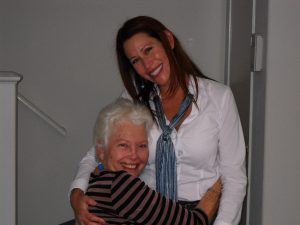 Even though she was permanently disabled, she danced again. It was a part of my life growing up with her to have people come from New York and stay in our spare bedroom. She continued to choreograph and perform well into her 60s. She was magic. She was such a beautiful, elegant, emotional communicator with her body. My mom was so elegant, and she had fun. You knew that she enjoyed it and loved it when she was up there.
Even though she was permanently disabled, she danced again. It was a part of my life growing up with her to have people come from New York and stay in our spare bedroom. She continued to choreograph and perform well into her 60s. She was magic. She was such a beautiful, elegant, emotional communicator with her body. My mom was so elegant, and she had fun. You knew that she enjoyed it and loved it when she was up there.
Anne Marie Welsh (dance and theater critic)
What I remember most about Ellen is her sense of humor, a wit that could be wicked and that always made her fun to be around. That, and her lithe, striking appearance onstage and off. I met her in the mid-1980s when I was still fairly new to San Diego, hired here as the dance critic for the then San Diego Union. Her stories about Martha Graham and the then-fabulous Graham company she danced with in the fifties were wonderfully detailed and taught me a great deal about the woman artist behind the legend, about her technique, and about the adoring attitudes of her company members. Ellen was one of the performers in the Graham film “A Dancer’s World” which I showed often in the dance history and criticism classes I taught at SDSU. Ellen could be spotted in other Graham videos I eventually accumulated as well. She was a staple of the company that included the great Mary Hinkson and Bertram Ross until one day, on an escalator in New York, her legs collapsed from under her. After many examinations and much suffering she was diagnosed with myasthenia gravis and had to give up dancing for eight years. Her dream had been shattered by a terrible irony, for that nerve disease withers muscle tissue.
Ellen never gave up, however, and eventually her strong willpower, advances in medicine, and a slow return to dancing healed her. In San Diego, Ellen did a fair amount of choreography for about seven years or so, including a series of collaborative evenings with Pat Sandback and the wonderful Amazonian Marta Keeney-Jiacoletti as “Big Ladies.” They were definitely tall, and they were good. One of Ellen’s best pieces was “Martha Says,” an hilarious sendup of the challenging, angular Graham Technique as well as a satire of the gnomic utterances of that famous modern dance trailblazer. Ellen’s choreography was usually laced with humor, though now and again she created darker works such as “Visionstreak” a piece about healing that she showed as part of her “Garage Dances” series at the Westminster Presbyterian Church in Pt. Loma. (Ellen lived in the Clairemont neighborhood and had made her garage into a small studio where she could work and rehearse.) She welcomed dancers of all sizes and backgrounds into the ad hoc groups she put together for her concerts, as well as many independent choreographers including the former ballet master of England’s Royal Ballet, Erling Sunde. He was another wicked wit who developed a strong dance program at USIU.
Ellen’s humor was often self-deprecating. I remember her telling me that she was never very good at counting a rhythm or even following one as a teacher, a choreographer or a dancer. You would never have known that to watch her perform. Anyhow, so she could learn more about that basic element of dance she worked with a percussionist and a Brazilian drummer at one point, incorporating them as well as a singer into a “Garage Dance” program that expanded her range and taught her some things she needed to know about beats. She was in her late 50s then.
Like her mentor Graham, Ellen was never afraid to take a risk. But unlike the icon of modern dance, Ellen was down to earth as both a woman and an artist. She was a pleasure to know and to watch. I learned a great deal about mid-century modern dance history from my conversations with her. I was so sorry to learn of her death.
Sharon Hancock (dancer)
I met Ellen Segal for the first time on Nov. 29, 1988. I remember the date because it was George Willis’ 50th birthday, and Pat Sandback threw a part for him. I was immediately taken with Ellen … the way she walked – heck, the way she stood – the way she dressed, the way she styled her hair … everything about her seemed so different, so unique. When the night ended, Ellen and I were the last two to leave, neither wanting the party to end. I believe they call that “kindred spirits”.
From that moment on we became fast friends. It was the first time I truly understood that expression … “fast friends,” as that is exactly what transpired.
I had been out of dance for a few years, having married and had a baby. It was Ellen who drew me back onto the stage with a beautiful trio based on the Chekov play “Three Sisters” and a terrific comedic piece called “Salem’s Brew”. She could be difficult to work for, demanding and short tempered, a way of working, I assumed, gleaned from her years of traveling and performing for the notoriously difficult Martha Graham. We were, however, always able to separate the business of dance and our close friendship. I loved her dearly from day one ‘til always.
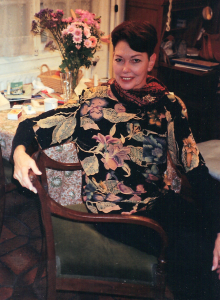 My son Luke also loved Ellen, as she was an imaginative “co-pilot” always going on “spaceships” with him, and dreaming up the most original games to play. She was like that … an original, creative in her singular way, one of a kind; and totally unabashed about living her life exactly the way she felt like living it. She brought the term “no holds barred” to an exciting, heightened level. Time spent with Ellen was never, ever boring. One never knew what would come out of her mouth.
My son Luke also loved Ellen, as she was an imaginative “co-pilot” always going on “spaceships” with him, and dreaming up the most original games to play. She was like that … an original, creative in her singular way, one of a kind; and totally unabashed about living her life exactly the way she felt like living it. She brought the term “no holds barred” to an exciting, heightened level. Time spent with Ellen was never, ever boring. One never knew what would come out of her mouth.
Luke was 2 years old when I met Ellen, and he used to call her “spicy”. That name was derived from the way she wore her hair … gelled and spiked up. He couldn’t pronounce “spike-y”, so he called her “spicy”. I’ve always thought that that suited her to a tee. She was, after all, spicy in every good way.
Anyone who has had the pleasure of seeing Ellen onstage, even if just a walk on, will understand the meaning of stage presence, the meaning of entertaining, the meaning of captivating an audience. Ellen Segal was as riveting on stage and as she was off.
I miss her now, and will miss her always.
George Willis (dance artist, founder of dance program at SDSU)
In the 1980’s, Ellen and I collaborated on a duet titled “Brenda.” It was great fun. Ellen loved to be outrageous. It had a sound track from a porn movie, fake blood, and zebra pattern costumes. She was a wild woman.
Ellen gave many wonderful parties and dinners in her home. At the drop of a hat she would model her latest lingerie for the guests.
Through the years she maintained, through mail and telephone, her friendship with Paul Taylor. They performed together with the Martha Graham Dance Company.
Pat Sandback (dance artist, SDSU dance program)
I never went anywhere with Ellen and had a boring time. Life was a feast and she enjoyed it all. Jean Cocteau’s quote “a little too much is just enough for me” fit her well.
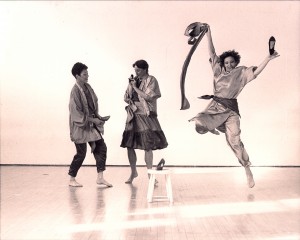 Ellen, Marta Keeney-Jiacoletti, and I started Big Ladies Small Dance Company because, as all over 5’9” in a time when everyone else was 5’6” and shorter, we simply stood out too much. We were always put in the back row. I didn’t know how to dance without someone in front of me. We gave our first performance at Sushi, which was then under the direction of Lynn Schuette. A second performance happened later. We titled that concert The Big Ladies Small Dance Company Returns. We all choreographed and danced in each other’s work. In one of Ellen’s dances I remember being a maid waiting on Ellen who was portraying Jackie Onassis. I think in that dance I was Imelda Marcos. I do remember a shoe box assemblage that was created by an artist friend of Ellen’s who drove us crazy with her obsessive concern with the assemblage, which she pronounced with an excessive French accent. Of course we tried on many shoes. Unfortunately I forgot to take the high heels off for the “dancing” part and had to perform athletic feats with them on which was quite a struggle. Now, as I think back, it probably worked. I will never forget those rehearsals. We did some of them in Ellen’s garage, which she had converted to a rehearsal studio. We laughed so hard there were frequent trips to the bathroom. All we had to do to send ourselves into uncontrollable laughing was to say “assemblage” in a heavy nasal tone. There was a fight to see who would reach the toilet first.
Ellen, Marta Keeney-Jiacoletti, and I started Big Ladies Small Dance Company because, as all over 5’9” in a time when everyone else was 5’6” and shorter, we simply stood out too much. We were always put in the back row. I didn’t know how to dance without someone in front of me. We gave our first performance at Sushi, which was then under the direction of Lynn Schuette. A second performance happened later. We titled that concert The Big Ladies Small Dance Company Returns. We all choreographed and danced in each other’s work. In one of Ellen’s dances I remember being a maid waiting on Ellen who was portraying Jackie Onassis. I think in that dance I was Imelda Marcos. I do remember a shoe box assemblage that was created by an artist friend of Ellen’s who drove us crazy with her obsessive concern with the assemblage, which she pronounced with an excessive French accent. Of course we tried on many shoes. Unfortunately I forgot to take the high heels off for the “dancing” part and had to perform athletic feats with them on which was quite a struggle. Now, as I think back, it probably worked. I will never forget those rehearsals. We did some of them in Ellen’s garage, which she had converted to a rehearsal studio. We laughed so hard there were frequent trips to the bathroom. All we had to do to send ourselves into uncontrollable laughing was to say “assemblage” in a heavy nasal tone. There was a fight to see who would reach the toilet first.
Ellen grew up in NYC. I think her father was in the shoe business and did quite well. The rest of the Jewish family included her mom and a brother. Early on she took ballet but really began her professional dance training at the Graham studio where she eventually was invited into the company. Most Graham dancers talk about how charismatic Martha was, and Ellen was the same. Her dance partner and friend in the company at that time was Paul Taylor with whom she continued a lifelong correspondence. One time Ellen and I went to NYC and Paul invited us for a weekend at his home on the water. I will never forget that time of having my dance hero cook dinner for us and read from his not yet published autobiography. On our drive back into the city I commented on the difficulties on NY city driving and Paul said that he found it really easy, just keeping moving with the flow, no need to make any decisions, and all would be fine.
In NY Ellen earned money as a model. I saw one of her lingerie photo ads. She was really beautiful and extremely photogenic.
Ellen was so generous with her things, time, and hospitality. You really felt as an honored guest when you were in her home.
I still miss her.

Award-winning dance journalist Janice Steinberg has published more than 400 articles in the San Diego Union-Tribune, Dance Magazine, the Los Angeles Times, and elsewhere. She was a 2004 New York Times-National Endowment for the Arts fellow at the Institute for Dance Criticism and has taught dance criticism at San Diego State University. She is also a novelist, author of The Tin Horse (Random House, 2013). For why she’s passionate about dance, see this article on her web site, The Tin Horse

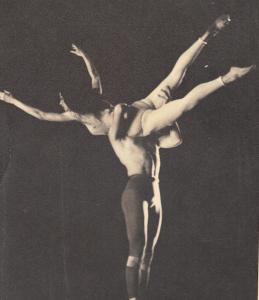
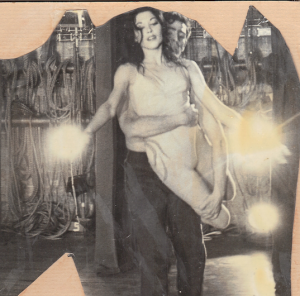
Thank you, Janice. This was a lovely tribute!
Michael, it was a privilege to get to see Ellen through these loving eyes.